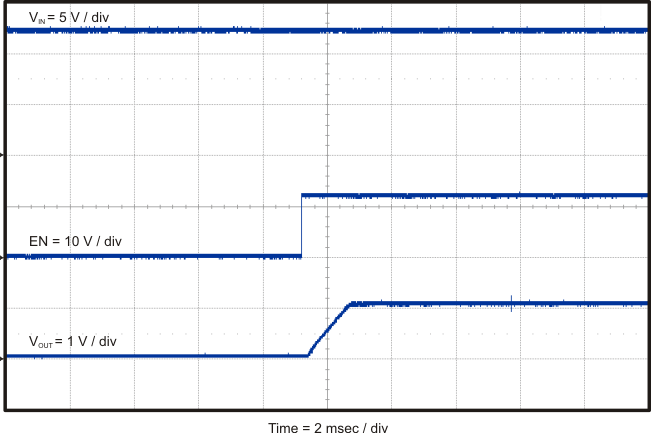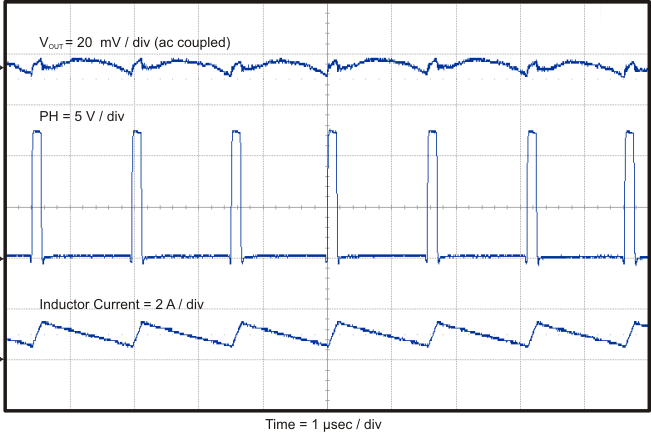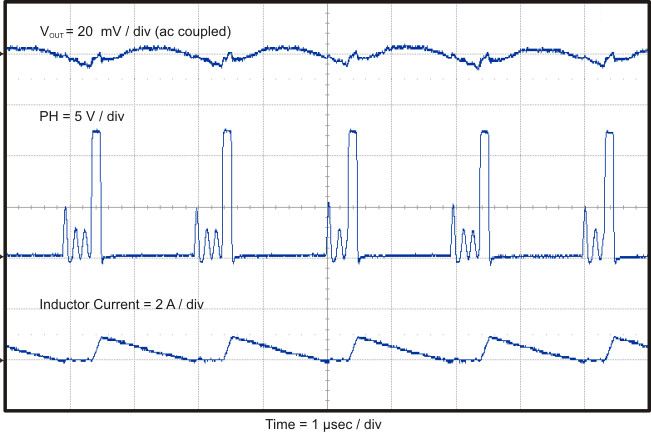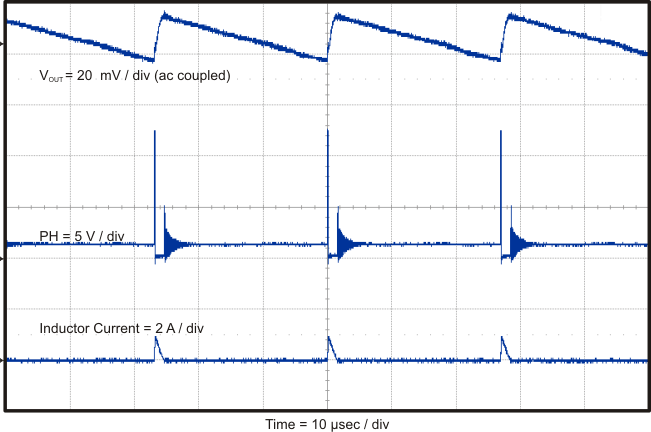SLVU444A March 2011 – August 2021 TPS54429E
5 Test Setup and Results
 Figure 5-1 TPS54429EEVM-608 Start-Up Relative to Enable
Figure 5-1 TPS54429EEVM-608 Start-Up Relative to Enable Figure 5-2 TPS54329EEVM-608 Normal Switching
Figure 5-2 TPS54329EEVM-608 Normal SwitchingWhen the inductor current falls to zero, Eco-mode operation begins. The TPS54329E enters a power-saving skip mode. Switching resumes when the feedback voltage at VFB falls below an internally set threshold. Figure 5-3 shows the switching activity as the circuit is just entering Eco-mode operation. The effective switching period increases slightly as the pulse-skipping time is short.
In Figure 5-4, the load current is reduced further, and the skip time is longer.
 Figure 5-3 TPS54429EEVM-608 Entering
Eco-mode Operation
Figure 5-3 TPS54429EEVM-608 Entering
Eco-mode Operation Figure 5-4 TPS54429EEVM-608 Fully in
Eco-mode Operation
Figure 5-4 TPS54429EEVM-608 Fully in
Eco-mode Operation